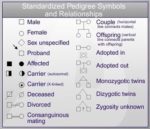The lower back muscles, also known as the lumbar region muscles, play a crucial role in maintaining the structural integrity of the body. They provide support to the spine, aid in movement, and are integral to tasks such as standing, bending, and lifting.
Anatomy of Lower Back Muscles
The lower back muscles can be categorized into three groups:
1. Superficial Muscles: These muscles are close to the skin’s surface and primarily help in moving the arms, maintaining the spine’s alignment, and shrugging the shoulders. The key superficial muscles in the lower back include:
– Latissimus Dorsi (Lats): This is the largest muscle in the upper body, extending from below the shoulder blades to the lower part of the spine.
– Levator Scapulae: This muscle raises the scapula (shoulder blade).
– Rhomboids: Comprising the rhomboid major and minor, these muscles pull the scapula inward towards the spine.
– Trapezius (Traps): This muscle aids in body movement, arm raising, and maintaining good posture.
2. Intermediate Muscles: These muscles assist with respiration by helping the chest expand and contract during inhalation and exhalation.
3. Intrinsic Muscles: These muscles, found deeper than the superficial and intermediate muscles, stabilize the spine and aid in bending, rotating, flexing, and extending the back. They also help control the trunk, neck, and head.
Function of Lower Back Muscles
The lower back muscles are the main structural support for the trunk (torso). They enable body movements, including those of the head, neck, shoulders, arms, and legs. These muscles work together to allow bending, twisting, turning of the head, and extension of the back. They also help maintain an upright posture.
The lower back muscles play a vital role in supporting the spine and assisting in respiration. The superficial muscles help move the arms, maintain spinal alignment, and shrug the shoulders. The intermediate muscles assist with breathing, while the intrinsic muscles stabilize the spine and aid in various movements.
Common Conditions and Disorders
Due to the significant role they play in supporting the body’s weight and facilitating movement, injuries to these muscles are common and can cause low back pain. To avoid injury and keep the back muscles healthy, it’s recommended to warm up before physical activity and maintain the strength of other muscles in the body.
In conclusion, the lower back muscles are a complex and vital group of muscles that play a crucial role in supporting the spine, facilitating movement, and assisting in respiration. Understanding their anatomy and function can help in maintaining back health and preventing common disorders.



